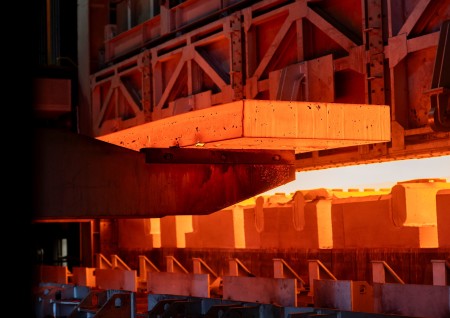The new continuous casting line 4, the extensively modernized hot strip mill 4 with two new walking beam furnaces, and fully automated slab logistics are at the center of the major project. The new units will replace the 20-year-old casting rolling line. At around 800 million euros, this is one of the largest investment projects in the history of thyssenkrupp Steel.
“This project is a decisive milestone in strengthening our leadership in technological and quality terms, while meeting the increasing expectations of our customers. Despite a very challenging economic environment, we are able to invest around 800 million euros to further improve our competitive position. This is a strong signal for steel and the Duisburg location. The future is being created here,” emphasized Dennis Grimm, CEO of thyssenkrupp Steel.
“The new plant technology in Duisburg is an important step towards modernizing steel production in North Rhine-Westphalia. The investment is a positive demonstration of corporate responsibility toward the location and it will contribute to increasing quality, efficiency, and flexibility. It will strengthen industrial value creation in areas such as automotive construction and energy supply, ensuring that North Rhine-Westphalia remains a competitive industrial location,” said State Minister for Economics, Industry, Climate Protection and Energy Mona Neubaur.
The new continuous casting line 4 replaces the casting section of the old casting rolling line and will ensure flexible and efficient slab production with high levels of precision. The system is also characterized by enhanced degrees of purity, improved shape accuracy, and surface quality.
The downstream hot strip mill 4, which is designed for around 3 million metric tons and underwent extensive modernization, has been equipped with two new walking beam furnaces that ensure more precise rolling accuracy and, above all, optimized surface quality. State-of-the-art control systems ensure the narrowest thickness tolerances, while optimized cooling processes further improve the material properties of the hot strip. The mill-edged slabs used can also be produced in significantly more flexible dimensions while allowing for an expanded product range.
The completely newly created slab logistics represents the link between the two units. It ensures fully automated, largely digital process handling. State-of-the-art control systems allow around 1.7 million metric tons per year to be synchronized in real time. This ensures maximum flexibility and efficiency in the process flow within the new system network.
All new systems are characterized by a high degree of automation and state-of-the-art control systems, for example enabling real-time monitoring of the production press through the use of digital twins. This also serves to ensure consistent and continuously optimized product quality.

